

 ver the past decade or so, there have been more than 160,000 different types of toys being sold in the United States at any given time, ranging from the most elaborate electronic marvel to the impulse trinket that can cost as little as a buck or two.
ver the past decade or so, there have been more than 160,000 different types of toys being sold in the United States at any given time, ranging from the most elaborate electronic marvel to the impulse trinket that can cost as little as a buck or two.
Many of these toys come and go in a season or less. (Some of the major toy retailers give a toy no more than six weeks to find an audience before pulling the plug. Yep, it’s that competitive out there.) But some become timeless classics, and whether they’re still being made or are simply fondly remembered, they all have had a profound effect on generations of kids who loved them.
So what makes a toy classic? The late Stan Clutton, who handled inventor relations for Mattel, described it best when he said that the best toy is one that “isn’t complete without the child.” And he was right. At the end of the day it doesn’t matter how many bells and whistles a toy has, or how good its advertising is, or how many other kids in the neighborhood have one; what truly brings a toy to life is a child’s imagination. In other words, what makes a toy a classic is less about the toy itself, and more about how children use it to have new experiences, explore their worlds, and express themselves. Indeed, it is the sense of self-exploration that makes a play experience truly memorable.
Classic play falls into three big categories: physical play, social play, and solo play. Each of these is important to the emotional and cognitive development of a child. You may not have thought about it, but when preschoolers repeat the letters of the alphabet, they are building a structure for acquiring language. When they learn to be good losers or good winners of board games, they’re learning how to keep the triumphs and tragedies of life in perspective. And when they build with bricks, they are developing the skills and creativity to solve problems and imagine solutions.
But whether they build character or not, what makes these classic toys so dear to our hearts is simply all the fun we had—and that’s a great thing. In all those years we spent dreading school, avoiding our homework, and eagerly seeking the release of playtime, we never knew that our toys and games were building the foundation of who we would be today. But they were, and thank goodness for that, because amid all of the responsibilities, challenges, and harsh realities we face in our adult lives, there’s nothing better than occasionally pausing to unleash our inner child by recalling the magic of the classic toys we played with.

 hile the Group was formed in 1932, it wasn’t until the early 1960s that LEGO became a household name worldwide. In the 1930s, the Billund, Denmark–based maker of wooden home products started to focus more on making toys. Its name is an abbreviation of leg godt, Danish for “play well.” Only later did founder Ole Kirk Christiansen realize that lego in Latin means “I study” or “I put together.”
hile the Group was formed in 1932, it wasn’t until the early 1960s that LEGO became a household name worldwide. In the 1930s, the Billund, Denmark–based maker of wooden home products started to focus more on making toys. Its name is an abbreviation of leg godt, Danish for “play well.” Only later did founder Ole Kirk Christiansen realize that lego in Latin means “I study” or “I put together.”
In 1947, the company began making injection-molded plastic toys, including a line called Automatic Binding Bricks. Over the next eight years, the company developed and perfected these bricks, renamed them LEGO bricks, and expanded distribution into Germany.
In 1958, LEGO introduced the iconic interlocking design and construction system. Now kids could build even bigger and more complex models because the locking bricks were more stable and made structures difficult to topple. So while there had been plenty of building sets before—even brick-based ones, such as American Bricks, which were for a time manufactured by Elgo Plastics—what set LEGO apart was how well their bricks held together and the whole new world of creativity and imagination this opened up.
Few people know how LEGO toys got to the United States. They arrived, almost literally, in a suitcase. In the late 1950s, the then-president of Samsonite luggage was visiting Belgium. He came across a LEGO set in a toy store and was instantly intrigued. So he went to Denmark and tracked the company down.
Luckily, LEGO executives had thought about expanding into the United States for awhile, so when Samsonite offered to devote part of its factory in Loveland, Colorado, to creating LEGO bricks, they jumped on board. (Samsonite was known for its hard plastic suitcases at the time, which were also made with injection molding.)
Knowing that architects such as Eero Saarinen had been using LEGO bricks to build architectural models, Samsonite’s young publicist Barry Schwartz took the bricks to the Pratt Institute, where he convinced aspiring architects to use them to build models of a city of the future. This got the attention of producers of the Today show.
Another early adopter was Norman Mailer. One day Schwartz received a call from the author, who simply wanted to build something using the sturdy, colorful blocks. So Schwartz had the company send the thousands of pieces Mailer had requested, and six months later, Schwartz recalled, “We went to his house, and there’s was an incredible ‘Rube Goldberg-ish’ thing made of LEGO.” The media loved it, and LEGO was on its way.
But the LEGO Group was still struggling to get the attention of toy buyers. So Schwartz convinced the company to set up a booth in the Danish Pavilion at the 1964–65 New York World’s Fair, where parents could leave their children to build and play while they explored the grounds.
LEGO bricks are one of the few toys that have stayed exactly the same over the years (the company understands the importance of sticking with what works). The design of the bricks has never changed, and many a set have been handed down from parents to kids—that is, if the parents will give them up. Few toys have inspired as many active adult collectors and players as LEGO over the years.
As popular as the bricks were (and are), it was not always smooth sailing for the LEGO Group. Despite getting the Star Wars license in 1998—a huge coup for sales—by the middle of the first decade of the twenty-first century, the company was having financial trouble. It all began when the patent on its stud-and-tube coupling system expired. Competitors rushed in to the market, and LEGO spent years in litigation, losing in every country.
But sometimes adversity can spur creativity, and today LEGO is more successful than ever. Even with direct competition in the block market from a number of manufacturers, LEGO is posting record growth.
The company has expanded its Star Wars line as well as other licenses, and reinvigorated its Technic, Hero Factory, and LEGO City building sets. And it’s made itself more relevant for the twenty-first century by expanding into theme parks and robotics, including the wildly successful Mindstorms line and a play lab at the Massachusetts Institute of Technology.
But perhaps the most dramatic area of growth has been in gaming and narrative-based play, including its popular Ninjago line of characters and stories introduced in 2011. The company has expanded into online play and video games, creating a more dynamic and contemporary play experience. In 2012, LEGO finally introduced LEGO Friends, a line aimed primarily at the way girls traditionally play. Still, the appeal of LEGO all goes back to the building, and today’s kids and adults love that as much as ever.
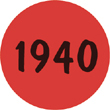
 hile the View-Master was first introduced at the 1939–40 New York World’s Fair, like so many other toys, it had long roots in the culture. In the 1850s, the Stereopticon, which allowed people to view 3-D pictures of exotic locations, became a sensation on both sides of the Atlantic. At the time, this was considered exciting home entertainment.
hile the View-Master was first introduced at the 1939–40 New York World’s Fair, like so many other toys, it had long roots in the culture. In the 1850s, the Stereopticon, which allowed people to view 3-D pictures of exotic locations, became a sensation on both sides of the Atlantic. At the time, this was considered exciting home entertainment.
Nearly a century later, William Gruber came up with the idea of putting color movie film inside a handheld viewing device with two eyepieces, when he discovered that two photos taken from slightly different perspectives and laid over each other created the 3-D effect when viewed through the binocular lenses. So Gruber put ten of these images on a disc that fit into his viewer and could be advanced by pushing down on a lever.
Not originally intended as a toy, the View-Master went the postcard one better and brought locations such as the Grand Canyon, Venice, and Carlsbad Caverns to life. Gruber’s sales soon weakened, and he almost went out of business during World War II when film, plastic, and paper shortages made it almost impossible for him to continue manufacturing. However, once the army and the navy realized that the View-Master could be used in training, they ordered one hundred thousand viewers and six million reels, saving Gruber’s company.
In the 1950s, as TV and other entertainment for kids took off, the View-Master started to become a kids’ toy.
Over the years, many different versions of the View-Master were introduced, though boomers will most likely remember the brown Bakelite unit that was introduced in 1955 and stayed in production for the next fifteen years.
The View-Master is still sold today, marketed primarily to parents of preschoolers. As technology has become more sophisticated, and 3-D movies and television shows have become commonplace, today’s kids aren’t impressed by images that would have wowed viewers nearly seventy years ago.

 very civilization and every era has had its favorite ways of telling the future. In fifteenth-century Italy, tarot cards made their first appearance. In the Victorian age, seers marketed crude gizmos and gadgets designed to help those beclouded in the mortal sphere determine their destinies by communing with the spirit world. In 1892, in the United States, this fascination went mass-market with the introduction of the Ouija board. And who could forget the timeless crystal ball? Consumers have never been able to get enough of any product that promises to provide a peek into the world of the unknown.
very civilization and every era has had its favorite ways of telling the future. In fifteenth-century Italy, tarot cards made their first appearance. In the Victorian age, seers marketed crude gizmos and gadgets designed to help those beclouded in the mortal sphere determine their destinies by communing with the spirit world. In 1892, in the United States, this fascination went mass-market with the introduction of the Ouija board. And who could forget the timeless crystal ball? Consumers have never been able to get enough of any product that promises to provide a peek into the world of the unknown.
While many versions of the Magic 8 Ball had been developed and patented over several years starting in the mid-1940s, the classic version we all know and love wasn’t produced on a large scale until 1950. Alabe Crafts called it the Magic 8 Ball, ostensibly because to be “behind the 8 ball” was popular slang for being in a pickle—or a disadvantageous position on the pool table—though there are other stories about the name’s origin. However the name came about, this plastic prognosticator had the answer for any question you could pose to it, though it was marketed “for entertainment purposes only.”
Like any good fortune-telling device, the Magic 8 Ball is simple to operate. Ask it a question. Give it a shake and turn it over and in a few moments the answer will float into view in the window in the base of the ball. The “Spirit Slate,” as that floating fortune teller was called, is a hollow icosahedron (that’s twenty sides) with text printed on each side that somehow remains readable through the inky liquid that fills the ball.
The Magic 8 Ball’s answers are often noncommittal and, like those of any swami worthy of a palm crossed with silver, open to interpretation: “Signs Point to Yes,” “Outlook Not So Good,” “My Reply Is No” or, a favorite, “Better Not Tell You Now.” You might want to think twice before making stock picks on the advice of the Magic 8 Ball.
Today the original Magic 8 Ball is a kitsch icon, and Mattel has produced timely tie-ins over the years, ranging from Harry Potter to SpongeBob SquarePants, as well as various parody versions.
While foretelling the future is always an imperfect art, I predict the Magic 8 Ball will continue to be a favorite for many more years to come.
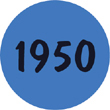
![]() n Hollywood, even the biggest stars have to start out playing small parts. This was the case for Fisher-Price’s Little People, who got their start playing the role of the tiny firemen who manned Fisher-Price’s 1950 toy Looky Fire Truck. Over the rest of the decade, these bit players began to take on bigger and bigger parts, giving wooden, but imagination-filled, performances on a stagecoach, a sports car, and later, famously, on the all-time Little People favorite: the school bus.
n Hollywood, even the biggest stars have to start out playing small parts. This was the case for Fisher-Price’s Little People, who got their start playing the role of the tiny firemen who manned Fisher-Price’s 1950 toy Looky Fire Truck. Over the rest of the decade, these bit players began to take on bigger and bigger parts, giving wooden, but imagination-filled, performances on a stagecoach, a sports car, and later, famously, on the all-time Little People favorite: the school bus.
Throughout the 1960s, the peg characters began to appear in all kinds of play sets—including a train, a farm, and an amusement park. In 1975, they even found sunny days on Sesame Street. Soon they gained such celebrity that they began to be sold separately under the name Play Family.
In 1985, the Play Family was renamed Little People, though they still retained their peglike look. It wasn’t until 1997 that the characters became more peoplelike, with arms, legs, and actual faces. Today, the five leading characters all have names—Eddie, Maggie, Sonya Lee, Michael, and Sarah Lynn.
The evolution of the Little People from abstract, faceless pegs attached as an afterthought to a toy fire truck, to humanlike, fully developed characters with their own story lines, reflects the changing nature of play over the past half century. This shift has been driven by advances in toy making, the ubiquity of television, the importance of story and narrative surrounding toy lines, and children’s deepening attachment to their toys.
The Little People’s star still shines, and in recent years, they have been featured in videos, apps, and much more.
Still, in the case of the Little People, kids’ imaginations have always been the real star of the show—and that’s a very big part of the fun.

 orld War II had a profound impact on the toy industry, at least indirectly. Thanks to wartime rationing and the scarcity of materials used for weapons or warfare, chemists around the country worked hard to develop synthetic alternatives to use in manufacturing. One desperately needed item was synthetic rubber. To that end, in 1943 a Scottish-born engineer named James Wright, who was working in the General Electric labs, combined boric acid and silicone oil and created a polymer that bounced when dropped on the floor. For the next six years, General Electric tried to find practical applications for the putty, to no avail.
orld War II had a profound impact on the toy industry, at least indirectly. Thanks to wartime rationing and the scarcity of materials used for weapons or warfare, chemists around the country worked hard to develop synthetic alternatives to use in manufacturing. One desperately needed item was synthetic rubber. To that end, in 1943 a Scottish-born engineer named James Wright, who was working in the General Electric labs, combined boric acid and silicone oil and created a polymer that bounced when dropped on the floor. For the next six years, General Electric tried to find practical applications for the putty, to no avail.
The bouncing putty may not have been particularly useful, but it was fun—at least that’s what Ruth Fallgatter, owner of a New Haven, Connecticut, toy store thought. In fact, she liked it so much she decided to sell it in her catalog. It did well, but not as well as Fallgatter had expected, so she sold the rights to marketing consultant Peter Hodgson.
Hodgson renamed the product Silly Putty, and, as it was Easter time, began packaging one-ounce blobs of the stuff in plastic eggs (they were readily available, cheap, and held the right amount of putty) and shipping them in surplus egg boxes.
But the Silly Putty fad didn’t truly hatch until August 1950, when a write-up about the oddly packaged plaything appeared in the New Yorker’s “Talk of the Town” section. Within three days, Hodgson had orders for more than 250,000 pieces. This was great PR, but, as had happened before and would happen again, it was TV advertising that really put the putty over the top. After all, on a commercial, kids could see how much fun it was to bounce, stretch, and even pick up newsprint on the putty—then ball it up and start all over again.
In the ensuing years, Silly Putty would go to the moon and travel the world. In the 1980s, it became a retro classic; baby boomers were more than happy to shell out a few dollars for the fun of sharing this timeless classic—available in most toy and drugstores—with their own kids.
It also has a bunch of handy household uses. For instance, Silly Putty won’t damage most contact lenses, so if you lose a contact, you may find it by gently rolling the putty around where you think you dropped it. If you don’t find the lens, you can always use the putty to relieve the stress of losing it.
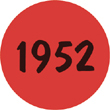
 any hit toys have one thing in common: They allow kids to break the rules in a way that’s fun and often parent approved. In 1952, Mr. Potato Head came along to let kids shatter Mom’s cardinal admonition “Don’t play with your food.”
any hit toys have one thing in common: They allow kids to break the rules in a way that’s fun and often parent approved. In 1952, Mr. Potato Head came along to let kids shatter Mom’s cardinal admonition “Don’t play with your food.”
Mr. Potato Head was never meant to be a toy—at least not in the traditional sense. Designer George Lerner intended the body parts to be the kind of cheap trinkets kids could delight in finding at the bottom of a cereal box. The breakfast cereal would provide the hands, eyes, noses, and pipe, but the kids would be responsible for producing the head—the potato.
Hasbro, however, had other ideas. A couple of cheap plastic body parts didn’t seem like much of a toy, so Hasbro decided they would provide the potato. Problem was, the original potato head was made of Styrofoam and couldn’t hold up to the endless facial rearrangements that were the basis of the play. Creative kids quickly turned to the vegetable crisper, and those who played with the original will remember how mom got tired of reaching for the produce and finding it full of little holes. Hasbro responded with a virtual vegetable frenzy, for a brief time marketing orange, pepper, cucumber, and carrot heads before reverting back to the classic potato.
Owners of the original Mr. Potato Head may remember that the top of the body used to be outfitted with a sharp spike—all the better for impaling the potato. The other pieces had sharp points and edges as well, which made them easier to stick into the potatoes but put kids at risk for collateral damage. In 1964, Hasbro introduced a round, plastic, hazardless potato and has sold millions and millions since.
As the baby boomers aged, Mr. Potato Head transitioned from plaything to pop culture icon. His simple yet unmistakable appearance made him a slam-dunk for publicity stunts, and Hasbro took full advantage. In 1984, Mr. Potato Head ran for mayor of Boise, Idaho. (He didn’t win.) And in the late 1980s, he gave up his iconic pipe as part of the Great American Smokeout with Surgeon General C. Everett Koop.
But his big Hollywood break came in 1995 when the character of Mr. Potato Head, voiced by Don Rickles, delighted viewers in the movie Toy Story. For baby boomers, now approaching or in their fifties (and likely viewing the movie with their grandchildren), the role of the endearing curmudgeon with a wry sense of humor was the ultimate encore for their beloved tuber.
Today, Mr. Potato Head is as much known for being a vehicle for parody than anything else. He’s been outfitted for different professional teams, appeared as “Spider-Spud” (a spoof of Spider-Man), and, perhaps most famously, “Darth Tater,” the perfect mash-up of two baby boomer darlings—Star Wars and Mr. Potato Head.
As of 2012, more than one hundred million Mr. and Mrs. Potato Head toys have been sold. He has become a Spud for All Seasons.

 hile certainly a cultural icon immediately recognizable to three generations of toy lovers, Gumby is known mostly for his innocent expression and his long, stretchy arms. What many people don’t know is that he was never meant to be a toy at all. He was conceived by illustrator Art Clokey as a character for an animated jazz video, but studio heads thought he was more appropriate for a children’s movie, so they tasked Clokey to experiment with an emerging animation style called stop-motion. After creating a number of more abstract clay figures, Clokey finally hit on Gumby.
hile certainly a cultural icon immediately recognizable to three generations of toy lovers, Gumby is known mostly for his innocent expression and his long, stretchy arms. What many people don’t know is that he was never meant to be a toy at all. He was conceived by illustrator Art Clokey as a character for an animated jazz video, but studio heads thought he was more appropriate for a children’s movie, so they tasked Clokey to experiment with an emerging animation style called stop-motion. After creating a number of more abstract clay figures, Clokey finally hit on Gumby.
The design of Gumby was eminently practical, aesthetically speaking. For stop-motion animation—which involves changing the position of an object in tiny increments over a sequence of individually photographed frames, creating the appearance of movement when the frames are played one after the other—the figure needed to be easy to pose, again and again.
Gumby’s body was inspired by the fairy-tale character the Gingerbread Man, and his head by an old photograph of Clokey’s father. Why green? Easy. Clokey liked green. In all, Clokey thought he was funny looking and believed children would as well. He was right.
In 1957, The Gumby Show premiered, a kids’ program featuring live action and a variety of shorts (all created by Clokey) starring Gumby; his horse pal, Pokey; Nopey the dog; and the evil Blockheads. Though the series was never a breakout hit, the innocence of Gumby and the way he always got out of jams made him a sympathetic and appealing character to kids, and he was popular enough to inspire toys, which were made with flexible plastic stretched over wire frames so kids could bend them and re-create the story lines of the shorts.
Gumby might have languished in obscurity were it not for two events. The first was a resurgence of interest in the original shorts in the 1980s; they were seen as “retro” and therefore cool. This led to a new series of programs in which Gumby led, of all things, a rock band.
But the person Gumby really has to thank for his ’80s renaissance is Eddie Murphy, who played Gumby in a variety of skits on Saturday Night Live, starting in 1982. Murphy popularized the phrase “I’m Gumby, damn it,” and portrayed Gumby as a seemingly sweet character who turned into an abusive curmudgeon as soon as the cameras weren’t rolling. The spoofs gave the affable Gumby the one thing he’d apparently been missing: an edge. People loved the skits, and they instantly sparked a new interest in the toys, largely among the older set. Today, Gumby is more than classic: He’s kitsch, which is why you can mostly find him in stores that deal in retro toys targeted to consumers age thirty and over. And even there you’ll probably find only Gumby and Pokey. Nopey, Prickle (a dinosaur), and the Blockheads are nowhere to be found.

 hen you get right down to it, doesn’t every kid have a fascination with bugs? Certainly Milton Levine did, as he watched kids playing with an anthill in the early 1950s and, as the company legend goes, recalled his own juvenile ant collection.
hen you get right down to it, doesn’t every kid have a fascination with bugs? Certainly Milton Levine did, as he watched kids playing with an anthill in the early 1950s and, as the company legend goes, recalled his own juvenile ant collection.
Kids had pets of all kinds—from goldfish to dogs and cats—but these were just single pets. What if they could have an entire world within their view?
That was the idea behind the original ant farm. It was a narrow plastic unit with clear sides and sand in it. In 1956, kids bought the farm for $1.29, and sent away for the ants, which arrived a couple of weeks later in the mail.
TV advertising helped make the ant farm a huge hit, and the company heavily promoted the fact that the ant farm was unbreakable and escape proof. Many baby boomers recall that maternal fear of a house overrun by ants was the biggest obstacle to their getting one. But some moms believed that the scientific value outweighed the infestation threat, and in the late 1950s, Uncle Milton was shipping thousands of ant farms (formally known as “antariums”) every week. Incidentally, Mom shouldn’t have worried. Uncle Milton has always used male harvester ants and has always said that it’s illegal to send queen ants, so even if they could escape, the ants couldn’t reproduce.
The ant farm gave kids a glimpse into an unseen world in a way no book or documentary could. They could watch in wonder and observe how the tunnels were made, how the ants were largely nocturnal, and how they did things like bury their dead. It was nature, right in your own bedroom.
The ant farm has never been out of production. In recent years, Uncle Milton has introduced different varieties of the farm, including one using a gel that provides both food and water to the ants, making it much easier to care for them. In 2010, the company introduced the Ant Farm Revolution, a cylindrical ant farm with a light inside that projects large images of the ants on the ceiling. Despite these upgrades, the original classic version is still available.
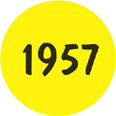
![]() n the late 1950s, the filmstrip was considered a breakthrough for educators—and great entertainment for students. Static pictures were projected on a screen, while an accompanying vinyl record provided the sound. (It would beep when the frame was supposed to be advanced.) Children of the ’60s will recall watching countless filmstrips—about everything from the history of the universe to how babies are born—in school. Virtually every teacher used them, and for kids they were an exciting break from normal classroom activities.
n the late 1950s, the filmstrip was considered a breakthrough for educators—and great entertainment for students. Static pictures were projected on a screen, while an accompanying vinyl record provided the sound. (It would beep when the frame was supposed to be advanced.) Children of the ’60s will recall watching countless filmstrips—about everything from the history of the universe to how babies are born—in school. Virtually every teacher used them, and for kids they were an exciting break from normal classroom activities.
General Electric introduced the Show’N Tell as a way for kids to enjoy filmstrips—and a real record player—at home. The unit looked like a small TV with a turntable on top. Filmstrips were slid into a slot and the images were projected on the screen while a record played the story; the filmstrip even advanced automatically. Pure magic.
To go with the players, GE produced Picturesound movies that ran just about four minutes—as long as a seven-inch, 33⅓ RPM record could play.
Naturally, this called for some severe editing when it came to adapting literary classics. For instance, in The Wizard of Oz, Dorothy had all of four minutes to meet all her friends, visit Oz, defeat the Wicked Witch, and beam herself back at home. There were similar treatments of Gulliver’s Travels, The Swiss Family Robinson, fairy tales, and the classic Disney movies, as well as science and other educational topics.
Kids loved the toy and found the radically abridged stories engaging and hilarious. While it seemed magical to them, the mechanism was very simple. The eight-inch-long filmstrips sat in a plastic frame that slid into the machine and had teeth along one side. When the filmstrip was inserted in the viewer, the teeth engaged with a sprocket that turned after every seven rotations of the turntable, raising the filmstrip and advancing to the next image. Synching wasn’t exact, and kids had to manually turn the turntable a couple of times to get the sound and pictures to start correctly, but kids loved that they could work it themselves, and by the mid-1960s, hundreds of titles had been produced.
By the mid-1960s, the Show’N Tell seemed archaic, and General Electric stopped making it.
However, in the early 1980s, the Child Guidance brand (a division of CBS Toys) revived the player, naming it a Phono-Viewer. It used the same records and filmstrips, but it could also project on the wall. New programs were created featuring Sesame Street, Disney, and other properties, as well as some original programs.
It’s retro appeal was enough to spur a short revival, but it quickly faded away.
In today’s world, where movies can be downloaded in moments, the Show’N Tell is a relic of another time, fondly remembered by some, but forgotten by others.
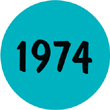
 eally, what is it about spinning that is so exciting to kids? Maybe it’s the thrill of being able to whirl around in ways that make adults queasy. Or maybe they just love the way the world seems to whiz past them as they spin. That’s certainly the appeal of playground merry-go-rounds and amusement park rides.
eally, what is it about spinning that is so exciting to kids? Maybe it’s the thrill of being able to whirl around in ways that make adults queasy. Or maybe they just love the way the world seems to whiz past them as they spin. That’s certainly the appeal of playground merry-go-rounds and amusement park rides.
The toy maker Kenner was certainly aware of the popularity of playground rides when, in 1974, they introduced the Sit ’n Spin. Now kids could have dizzy fun at home anytime. The toy was very simple. One large disk sat firmly on the floor and had a steering column attached to it; a second, concentric disk sat on top of that and spun freely. Kids sat on the upper disk, crossed their legs around the steering column, and pulled on the wheel on the top of the steering column to get themselves spinning.
Over the years, the toy has remained basically unchanged, though it’s been updated to feature different characters.
Today it’s still readily available from Playskool—and probably will be for generations to come.
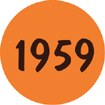
![]() t wasn’t much more than a flashlight with a holder for filmstrips on the front, but at the time it garnered the kind of excitement that announcements of the latest iPhone do today. Back when kids could see their favorite cartoon shows only once a week, what was better than being able to enjoy the company of Huckleberry Hound, Mr. Magoo, Yogi Bear, Popeye, Bozo, Atom Ant, Secret Squirrel, Clyde Crashcup, and many more any time they wanted? There was nary a popular cartoon show or sitcom during the period that didn’t have a Give-A-Show slide strip to accompany it.
t wasn’t much more than a flashlight with a holder for filmstrips on the front, but at the time it garnered the kind of excitement that announcements of the latest iPhone do today. Back when kids could see their favorite cartoon shows only once a week, what was better than being able to enjoy the company of Huckleberry Hound, Mr. Magoo, Yogi Bear, Popeye, Bozo, Atom Ant, Secret Squirrel, Clyde Crashcup, and many more any time they wanted? There was nary a popular cartoon show or sitcom during the period that didn’t have a Give-A-Show slide strip to accompany it.
The toy included the projector and a bunch of slides, and kids could project them on any wall or the ceiling. It was pretty low-tech, but kids didn’t mind. In the early 1960s, home slideshows were all the rage, and this was a kids’ version of the home movies they saw their parents screening at dinner parties. It’s easy to forget that when the Give-A-Show Projector first hit the shelves, color TV was a novelty, and TV shows for kids were either on early mornings or weekends. The novelty of the Give-A-Show Projector was that it put kids in charge of their own entertainment.
Plus, adults who remember this toy from their childhood will recall, in addition to the thrill of having their own projector and being able to run the show, how much fun it was to distort the picture on the walls and ceilings, simply by moving the projector.
As one might expect, home video and cable TV quickly finished off the Give-A-Show Projector. As the VCR became standard in homes and as favorite cartoons were seen five days a week or more in syndication, kids had a new level of access to entertainment and little need for the Give-A-Show Projector.
Every once in a while, you’ll find one of these in an antiques store, but aside from a few blogs and collector’s sites, this toy is a relic of another time.
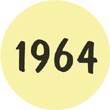
![]() f you never had one, it might be hard to imagine the appeal of Thimble City and the hours of play it inspired. It wasn’t much more than a piece of beaverboard with plastic legs, forming a stage of sorts, and some cutout buildings, but Remco’s Thimble City had as close to a cult following as a toy could have in the early 1960s.
f you never had one, it might be hard to imagine the appeal of Thimble City and the hours of play it inspired. It wasn’t much more than a piece of beaverboard with plastic legs, forming a stage of sorts, and some cutout buildings, but Remco’s Thimble City had as close to a cult following as a toy could have in the early 1960s.
The toy was like a stage set: a street scene with a fire station, supermarket, service station, and some other stores and office buildings. But what brought Thimble City to life were the magnetic wands that kids placed under the base to move the cars and small figures around the miniature city.
The magnets on the wands would connect to magnets on the underside of the vehicles and figures, so it looked like they were moving on their own around the Thimble City world. Using the wands, kids could park cars in parking spaces, drive through the car wash, and move people up and down the street and even through the swinging doors of the various buildings.
This was open-ended, imaginative play at its best. The magnets may have been the “magic” that animated the cars and people, but it was truly the magic of kids’ imaginations that gave life to the city.
The toy was so successful that in 1965 Remco introduced Thimble City Union Station. It worked exactly the same way, but instead of a quiet city, kids created the bustling world of a train station.
Union Station soon eclipsed Thimble City in popularity, largely because of its catchy TV commercial. Adults who were kids at the time can still quote today: “Thimble City Union Station. Railroad center of the nation.”
Like any popular toy, these had their day and disappeared after a couple of years, especially as toys emerged that put the emphasis more on speed and competition than on quotidian life in a miniature town.
Today, these are rare to find, even for collectors, and nearly fifty years later, Thimble City exists mostly as a memory—and a fragment of a commercial jingle—for those who once brought its streets to life.

 ou can count on it: When a feature proves successful in one kind of toy, manufacturers scramble to put it into others. Sure enough, the incredible success of Chatty Cathy prompted toy makers to try to find ways to use the pull-string-activated talking unit in other toys.
ou can count on it: When a feature proves successful in one kind of toy, manufacturers scramble to put it into others. Sure enough, the incredible success of Chatty Cathy prompted toy makers to try to find ways to use the pull-string-activated talking unit in other toys.
Though by 1965 there had been a number of different talking toys, none were strictly educational toys, which until then had been limited to no-frills affairs such as flash cards, magnetic letters, and puzzles. Mattel saw the opportunity to revolutionize educational toys by adding technology to make them talk.
See ’N Say worked very much like the name suggested. The child pointed the plastic arrow in the center of the round unit to the picture of the animal he or she wanted to hear and pulled the string. The arrow would then spin around, which would engage a needle, which would project the vibrations through a plastic cone, just like on a gramophone, at which point kids would be treated to the sounds of their animal of choice—ducks, dogs, frogs, or the cow with a long, rumbly “Moo-oo-oo.” Pulling the string as it was winding back into the unit sometimes caused it to stutter, which to some kids was the height of humor.
Parents loved it because it was educational—especially after Mattel introduced versions with even more traditional learning subjects, such as numbers and letters. The toy also proved to be very durable; it could survive just about any drop or sibling attack.
Today the See ’N Say is as popular as ever, even in a world powered by tablets and smartphones. Fisher-Price currently makes about ten different models, and not surprisingly, there have been versions featuring Snoopy, Dora the Explorer, and other characters. Though the technology has been brought up to date—the pull string was replaced by a lever, and later the playback device was replaced by a computer chip—the cows still go moo and the ducks still go quack, and the basic look and play have never changed.
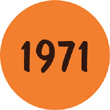
 hether you played with them or not, you can probably quote the tagline: “Weebles wobble, but they don’t fall down.” That was the charm and the fun of these egg-shaped toys. According to Hasbro’s history, the toys were inspired by the popular “bop bags,” punching bags that had weighted bottoms that would stand back up after kids punched them down. Weebles were miniature versions of those—without the punching.
hether you played with them or not, you can probably quote the tagline: “Weebles wobble, but they don’t fall down.” That was the charm and the fun of these egg-shaped toys. According to Hasbro’s history, the toys were inspired by the popular “bop bags,” punching bags that had weighted bottoms that would stand back up after kids punched them down. Weebles were miniature versions of those—without the punching.
Kids loved playing with the Weebles and wobbling them, and loved that they had their pick of a wide variety of play sets. There were farms, amusement parks, a circus, and others. There were also accessories that kept the Weebles stationary while kids played with them. If a kid could do it, the logic went, a Weeble could, too, and there were all kinds of activities, such as riding in cars and boats, swinging on swings, and more.
All of the play revolved around the fact that at some point the Weeble would stop wobbling and come to a rest, and then the kids would knock them back into action. (For a one-year-old, this is comedy.)
As the line grew, other innovations, including a glow-in-the-dark Weeble, emerged, and kids began collecting them. Special holiday versions were created, as were Disney and Sesame Street sets.
Weebles disappeared in the 1990s, but in the early 2000s, Hasbro’s Playskool brand reintroduced them, and they’ve been a staple ever since. For a while, Playskool introduced Weebles that were more doll-like, but those didn’t do well, and they returned to the eggs.
Modern Weebles are a lot larger than the originals, and like many other classics there is a strong collector community for the toys. Terry Hoknes has written a book, The Complete Weebles Toy Index, History and Price Guide 1971–2011, for those who really want to dig deeply into their world.